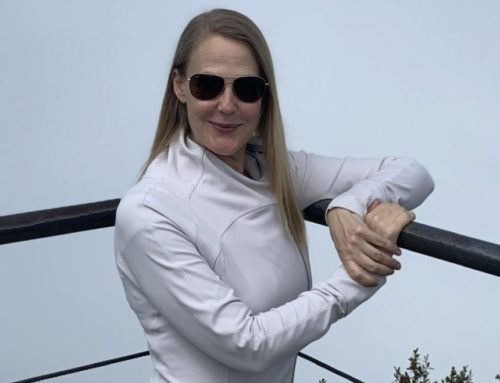If you’re in the luckiest 1% of humanity, you owe it to the rest of humanity to think about the other 99%.
– Warren Buffet
Barnaby Marsh is a renowned philanthropic advisor helping the world’s biggest philanthropists and philanthropic institutions create transformational impact. Over his 30+ year career, Barnaby has put billions of philanthropic dollars to work in making the world a better place and remains at the forefront of philanthropic innovation. Barnaby works closely with billionaires to help crystalize their philanthropic intentions, devise a philanthropic path for success and avoid common practices that lead to massive waste. In this interview, Barnaby shares insights about the challenges and opportunities facing mega philanthropists including the transference of wealth to future generations. Barnaby is a visiting scholar at the Princeton Institute of Advanced Study, and co-author of the book “How Luck Happens, Using the Science of Luck to Transform Work Love and Life.”
The following has been edited for clarity and brevity. Please listen to the full interview HERE on Overhead Space Podcasts on Apple.
Jane Cavalier: Barnaby, I’m thrilled to have you here today. Just to start, how would you describe today’s philanthropic market and what are the trends transforming it?
Barnaby Marsh: What I’ve been seeing over the last 15 or 20 years is that people aren’t waiting until they’re almost ready to die before they’re thinking about making big gifts. They’re giving earlier on in their lives. They’re involving their families. Philanthropy is not easy, especially with larger amounts of money. It changes relationships. Money is not necessarily used the way that people think it will be used, and things often go wrong.
Jane: What’s the biggest challenge you see?
Barnaby: The thing that’s most disheartening for me as a professional who’s been working in this space a long time, is that a lot of people go out very idealistically without considering some of the bumps in the road that others have hit, and so they make the same mistakes that others have made. You see it over and over and over again.
Jane: What are the chances of hitting a speed bump?
Barnaby: 100%. That’s one of the things I work on with people. We try to avoid hitting the bumps that are foreseeable that cost not only money, but time. Often, time is the limited factor. These are busy people, or they might have had a recent life event, and might not have 25 years of time to just experiment. We also look at the bigger bumps and look at the ways to avoid those or steer around them. Depending on which area it is, whether it’s medical research in hospitals or education or the environment, there are different types of issues that come up again and again and again.
Jane: What are some examples of common speed bumps?
Barnaby: One of the biggest issues is thinking that money alone solves problems. Let’s say you might have a poverty initiative. You might think, “A way to alleviate poverty is to give people money” But something like that doesn’t typically have a sustainable benefit. When the money runs out, the problem is still there. A more satisfying way is look at ways that the money can be used to generate more wealth, to subsidize entrepreneurial behavior, to build awareness of certain types of possibilities and opportunities, and ways to elevate those who are natural leaders within communities. Those types of solutions will typically have a more lasting effect that will grow over time.
Jane: What’s another common challenge facing philanthropists?
Barnaby: Without a clear goal, it’s really hard to make progress. Remember when Mark Zuckerberg gave $100 million in Newark without many specifics? The money was soon gone, and nobody really knew what happened to it. That sort of thing is common. Donors must be specific and orient people towards a specific goal.
Jane: When you meet with people, how often do they have that specific goal?
Barnaby: Most haven’t thought it through. They’ll just have an area of general interest. I sometimes play devil’s advocate by saying, “Well, what happens if this goes wrong or that goes wrong?” or, “Have you looked at what so-and-so is doing?” That way, we can really get all the possibilities on the table. From there, we try things out. People start smaller to learn and to see what works.
Jane: I really like the idea of making a philanthropic impact over time. What kind of runway or timeline should a philanthropist be looking at?
Barnaby: I always encourage my clients to start as early as possible and to encourage their kids to start as early as possible, because there’s really no substitute for experience. Each project is a little bit different, and the leadership on different projects is different. So, it really does take time. It’s rare to have projects that work from the start. Having time on your side is really helpful.
Jane: With modern philanthropy, it seems like a donor would need to devote real time to achieve success. It’s not as simple as giving away the money if you want real impact.
Barnaby: That’s right. If you want to make an impact in philanthropy, I believe that you need to pay attention to what’s going on. You can’t just hand it off and say, “Here’s $10 million. I want to solve poverty.” That typically doesn’t yield a particularly good result. Remember, most people don’t think of themselves as philanthropists; rather, giving one more thing and these people are busy. But there is no substitute to spending the time. I don’t work with people who don’t want to get engaged because the results are too often disappointing.
Jane: Giving away big money is a lot harder than I imagined. What are the critical pieces?
Barnaby: If you are giving a large amount, a really big question is – what kind of person is managing and leading the effort? For some projects, I play that role. Often, however, it is not one person, but a team of people.
Jane: What kinds of people are needed for a successful effort?
Barnaby: We identify people who are risk takers and who aren’t afraid to get into trouble because they can solve problems. It’s incredibly important to pick the right types of people, people who are creative, and who drive change. Not just changing hearts and minds, but also changing the flow of other money. Money needs to also activate other money to create a broader impact. For that, you need special types of people who are inspiring, who have vision and who can make a difference with the money.
Jane: Absolutely. That’s not easy to find.
Barnaby: I always tell my clients, “Don’t skimp on talent.” A lot of times, they’ll look for someone who might want a side project and volunteer. That’s fine, but it’s often not good enough. Often, you need someone who’s really resourceful.
Jane: I’m hearing you say, that even for big money to have real impact, it needs to work with other money that’s out there.
Barnaby: I see that in every case of successful philanthropy. The philanthropists or their agents are able to tap into other resources whether it’s PR, resources in getting public attention and engagement, or money or institutional support, in some cases governmental support. Some of these issues, obviously, are interesting to politicians. If it can be packaged in the right way where others can take them on as part of their own cause, that really helps things to snowball..
Jane: I read that something like $1 trillion is going to be transferred from Baby Boomers to younger generations within this decade. How does that wealth transfer work?
Barnaby: Most of the wealth is not necessarily liquid. People will often transfer their businesses or investment portfolios. If it’s liquidated and people are using it philanthropically, you see in the subsequent generation rolling their sleeves up and getting engaged, which is really great. Countless times, I’ve worked with families where the younger generation sees the philanthropic opportunities as an outlet for their energy and creativity..
Jane: It seems the younger generation is starting to take the reins in big philanthropy?
Barnaby: The number of younger people are engaged philanthropically is increasing. They say the millennial generation may be less interested in material things, and that’s certainly been my experience. For them, it’s more about passion, getting people involved, excited, and creating a better future. That’s done, obviously, in social groups and in social ways. It’s very exciting, Jane.
Jane: Is the wealth transfer to younger generations typically directed or left open?
Barnaby: It really varies, but typically, it’s left open. With the super wealthy clients I tend to work with, multi-billionaires, they might leave each child $1 billion that’s unrestricted, but then the larger amounts of money, if there’s, let’s say, $10 billion or $20 billion or larger amounts of money, will be in a vehicle such as a private foundation where the different generations can be engaged in that. Other parts will stay within their family business structure that will have different types of ownership structures. We see a mix where there is, typically, a discretionary pool that’s left to the next generation and then also a part of the pool that is committed to continuing the family business or continuing an area of philanthropy that the wealth originator cared passionately about, and that would be in a private foundation structure. Sometimes, it’s a tough thing when the next generation might not share the same passions as the wealth originator and I work through sorting out those dilemmas.
Jane: What makes a successful family foundation?
Barnaby: The best family foundations try to anticipate a range of different outlooks many years into the future, and allows for a diversity of different outlooks so that it doesn’t create tensions and splits within the family. What you see in those structures is a diversity of philanthropic areas such as medicine, health, environment, education. Then different family members can decide which areas they want to be engaged in, and there’s not rigid structures where everyone needs to focus on the same thing. That allows for multiple generations to find a niche for themselves and to express their philanthropic creativity and feel satisfied by creating something that they’ve been able to shape. These things must be thought about in advance recognizing that children, grandchildren and others involved might have radically different world views. Accommodating those in a way that doesn’t create family tensions is very critical.
Jane: What areas do you think are ripe for transformational impact over the next 10 years?
Barnaby: Traditional areas like health and education have some of the biggest possibilities for radical transformation, because the current systems were designed and built in a different age. In our age of interconnectivity, there are great possibility frontiers. I think that we will see a lot of transformation. For example, people might not sit around in the doctor’s office for a few hours waiting for an appointment or might not be sitting in warehouse-type schools as much.
Jane: In our age of interconnectivity, news travels fast. What role does that play in philanthropy?
Barnaby: The changes in technology are creating possibilities to reach bigger numbers of people faster, easier. Most people, when they’re thinking about philanthropy, are not thinking about awareness campaigns per se. I think we’re going to see more people thinking of the awareness campaign as the primary driver of societal change as opposed to a secondary add on. Because that’s really where a lot of the action is right now, winning hearts and minds to create a generation which brings about new types of possibilities for citizens.
Jane: You mentioned this idea earlier, the importance of bringing people onboard to your philanthropic vision and pathway.
Barnaby: Philanthropists can easily find themselves in a rarefied bubble. They’re surrounded by people who tell them what they want to hear, and they think they’re having a big impact. But they really aren’t because they’re talking to people who already believe what they believe, and it’s not really going beyond that. The real test is convincing people who are not necessarily passionate about an area to be passionate about it. If you’re successful at that and able to convince more and more people that an area of interest is critical and urgent and actionable, things really change. First other philanthropists become involved and if there’s enough success on the public awareness horizon, people in government start paying attention. Then you see laws changing, and you see resources being diverted differently. This is really one of the frontiers for philanthropic innovation, figuring out the public awareness piece and bringing about broader innovation that way.
Jane: What advice would you give to a wealthy individual who still has not yet made a philanthropic commitment?
Barnaby: Be committed. Be involved. Be present. That’s the single most important principle, especially when dealing with large amounts of money. I talk about this at length with my clients. Whether it’s $1 million or $1 billion, a lot of effort went into making that money – often, years. Giving that money away effectively is not going to happen as a result of a five-minute exercise or even a two-hour exercise. Very often, when people talk with their estate planners or lawyers, the “how” gets very little attention. So plan. Strategize. Be engaged. Be involved. That is how to make great things happen.
To learn more, reach out to Barnaby at [email protected].
Please listen to the full interview HERE in an Overhead Space podcast.
FACT FOR THOUGHT
$68 Trillion
The Great Wealth Transfer. As much as $68 trillion will change hands between various generations over the next 25 years, according to Cerulli Associates.
Photo Credit: Ravi Roshan on Unsplash
Enjoying Overhead Space? There’s More to Love.
Subscribe to Overhead Space to receive mind-expanding editorials and interviews to help your organization reach its full potential.




